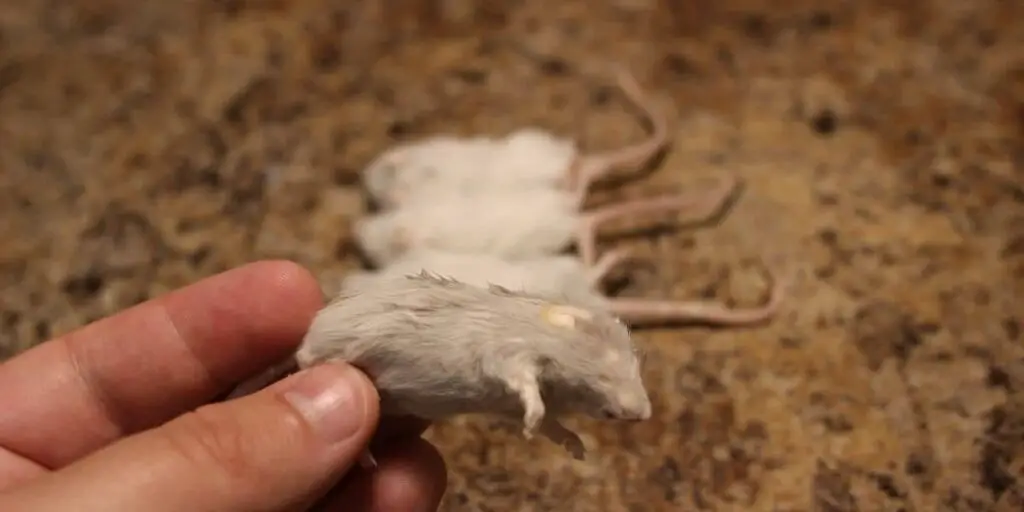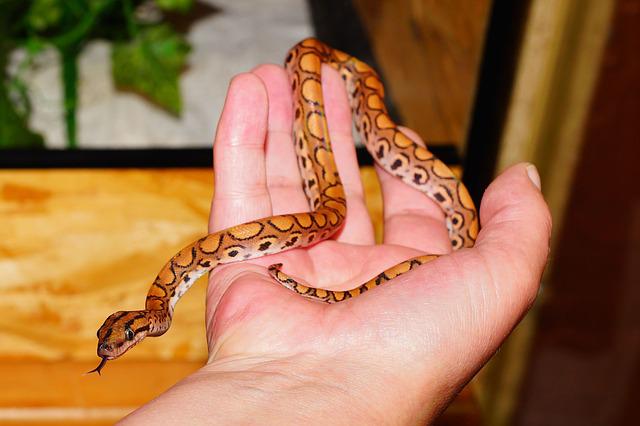There are some enormous snakes out there, many of which are kept as pets. But for the most part, smaller snakes are more common as pets since they require less space and are a lot easier to handle. They are also great for children who are just starting to learn how to care for reptiles.
Depending on what you mean by small snakes will depend on what they eat. Baby snakes, for example, will eat things from eggs, small mammals, and frogs whereas smaller species of snakes might feast on insects. Only the biggest species of snake can egg things like cattle, Dogs, or even humans as seen on TV.
In this article, we are going to be looking at the things you might be able to offer your small snake, whether it is a smaller species or a juvenile; there are many things you can provide it with for a healthy and nutritious diet.
Snake Diet
There is not a single snake on the planet that is not a carnivore. All of these wonderful animals will need a diet that is based on meat. If you are going to keep a snake as a pet, it is important that you are willing to provide it with a meaty meal, even if this can be a little difficult to get used to.

Larger snakes will eat much larger prey whereas smaller species will need something that they are easily able to swallow and digest.
Your small snake will typically need to be fed around twice a week although how often he eats will depend on a variety of factors.
How Often To Feed A Small Snake
As we have mentioned, you will need to feed a small snake around twice a week. In the wild, this is typically what you would expect to see, however, there may be things that affect how frequently your snake eats.
If you are reading this to understand the eating habits of a baby snake, then you will notice that as your pet grows, she will not eat as much. This is because juveniles need more sustenance as their bodies are growing.
Once they reach adulthood, the need for food will dwindle and they may only have one meal a week.
Conversely, if you are looking at feeding a smaller species, eating twice a week might be a lifelong thing.
Furthermore, if you are breeding smaller snakes and have gravid females, it is likely that she may want to eat more often. In this case, you should offer her as much food as she needs as this is important for her eggs.
Live Prey
One of the most contentious issues between snake owners is whether or not live prey should be used. There are some who would argue that using live prey is the best way to replicate the natural diet and hunting methods of the snake if it had lived in the wild.
Snakes are naturally wired to hunt, catch and eat their prey. Offering dead prey might not be interesting to the snake and he may pay no attention to the food.
On the other hand, some snake enthusiasts insist that dead prey is a must. They argue that feeding your snake dead food from the get-go will train him to enjoy this and this method is ultimately more humane for the prey.
However, smaller snakes, particularly juveniles should be fed live prey. This is easier for them and often easier for you as an owner. Baby snakes will have this instinct to hunt and while it is possible to train your small snake out of wanting live food, it can be something of a challenge.
There is no right or wrong and it is always important to make a decision based on how you feel and remember that this is just the natural food chain, regardless of how it happens.
What Foods Do Small Snakes Eat?
The type of food that your small snake will eat will depend on the species, age, and size.
When a snake is young, it is likely to want to eat the same food that adults of the same species will eat. However, the most problematic aspect of this is that the snake simply cannot manage the size of the prey.
For babies, you might offer pinkies, which are essentially newborn mice and these make a great meal for baby snakes. However, these are usually purchased frozen so if you want to offer live food, they may not be ideal.
Milk snakes are a common small species of snake and the young can be offered 3-5 pinkies twice a week.
There are a lot of snake species that feast on warm-blooded prey and this might include birds. However, when they are small, they may not be able to manage an entire bird so many babies will eat the eggs.
Snake species that remain small tend to have smaller prey. Some snakes will feed on insects, whereas others might go for frogs, small lizards, and small mammals.

Garter snakes are small species that feed on insects. These are a good choice for people who find offering rodents difficult. This small snake can eat things like crickets, worms, and beetles. It might also surprise you to learn that this small species can also be fed on fish!
Similarly, ribbon snakes are relatively small and are a great pet for those who are just starting out with these creatures. They will also eat a variety of insects, small fish, and the occasional frog as a treat.
You may not think of snakes eating insects in the wild but it is interesting to learn that there are some species that will exclusively dig in search of insects, slugs, worms, and other small creatures like this.
Food Size
As we have seen, small snakes have a vastly varied diet depending on several things. However, one thing that is consistent is the size of the food.
You should never offer your small snake food that is too big for it, this can be dangerous.
As a rule of thumb, you should provide foods that are no wider than the widest part of the snake; go a little smaller if you can just to be on the safe side.
If your small snake tries to eat something that is too big, there may be several issues. It can make them become very sluggish but more seriously, they may sustain internal damage.
Conclusion
Small snakes make great pets, they are easy to handle and do not need huge amounts of space. However, it is important to get their diet right.
The species of snake, its age, and its condition will all play a part in the type of food it will eat. Baby snakes might eat smaller versions of their parents’ diets whereas smaller species might opt for insects and worms.
- Are Garter Snakes Friendly? Here’s What You Need to Know
- Ball Python Continually Opening Mouth. Causes and Solutions
- Do Ball Pythons Live Underground? Exploring the Natural Habitat of Ball Pythons
- Do I Need to Mist a Ball Python Tank? A Clear Answer
- Ball Python Body Language: Understanding Your Pet’s Nonverbal Communication




